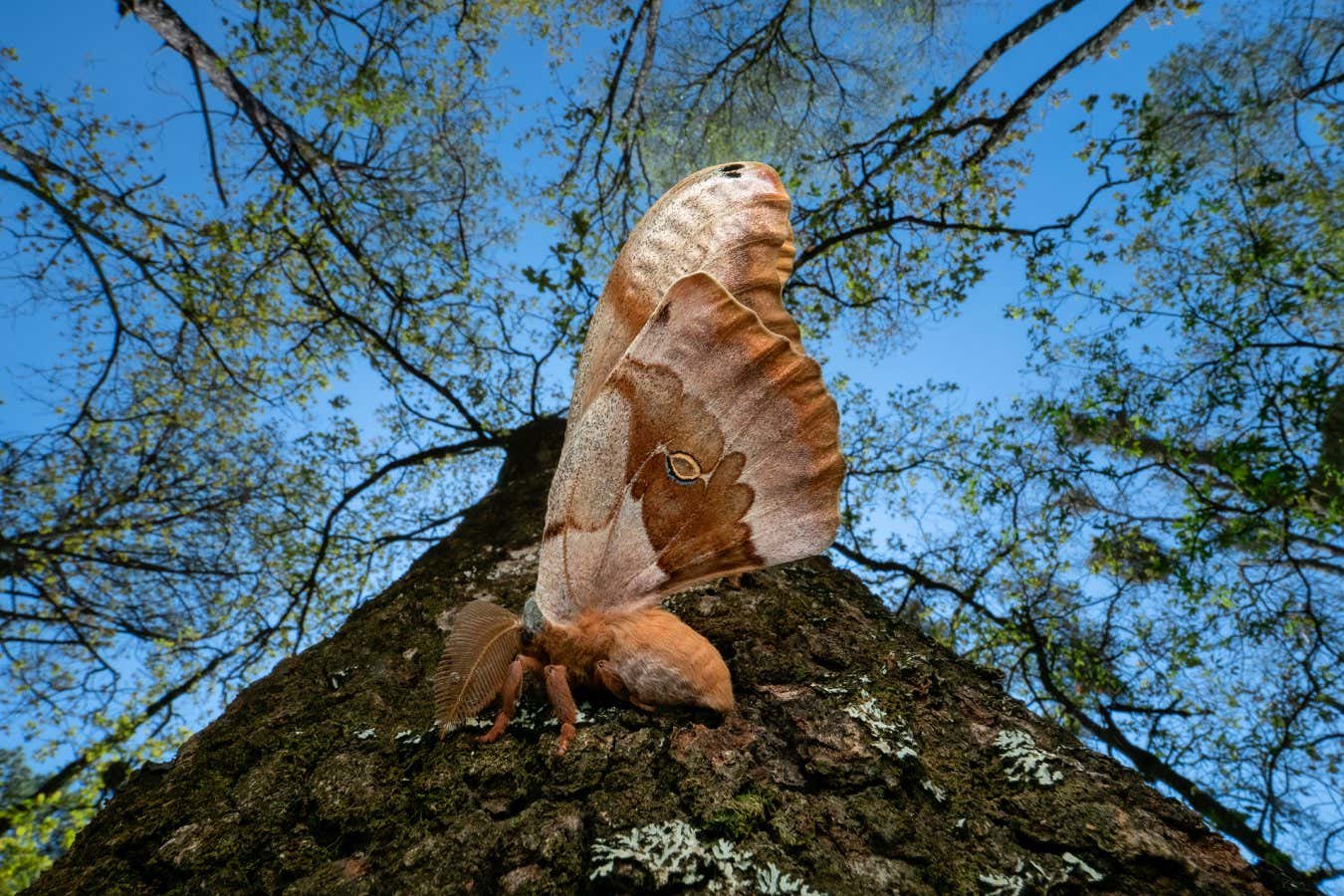
A spiny toad amplexus, with a female in the middle of several males.
Aloys Pichard
Each year, hordes of spiny toads (Bufo spinosus) gather to breed and lay their eggs in freshwater lakes and ponds, mainly across Spain, Portugal and France. Mating is a rough and tumble affair, though, with males often outnumbering females by 5:1. In their desperation to find a mate, males will commonly clasp onto a female already locked into an embrace – known as amplexus – by another mate.
Aloys Pichard captured one of these “breeding balls” in May (main picture), when the toads were crossing a road at night in southern France to reach egg-laying grounds. His photo, along with the others shown here, was shortlisted in this year’s Close-up Photographer of the Year contest.

Gold‑tailed Melitta bees
Joris Vegter
Advertisement
Joris Vegter’s image of four gold-tailed Melitta bees (Melitta haemorrhoidalis) nestling in a flower head is shown above. Melitta bees often sleep together inside bell flowers overnight for warmth. Vegter says he looked in more than 1000 flowers around Groningen in the Netherlands until he found the snoozing bees. “My passion is to share the unseen beauty of the tiny world all around us,” he says.

A male Polyphemus moth
Ignacio Castellanos
Pictured above is Ignacio Castellanos’s image of a male Polyphemus moth (Antheraea polyphemus) in an oak forest in Huasca, Mexico. These moths measure more than 15 centimetres from wing tip to wing tip.

Potbellied seahorse
Daniel Sly
Daniel Sly’s shot of a potbellied seahorse (Hippocampus abdominalis) near Bare Island, Australia, is shown above, with Aris Kolokontes’s close-up of a ladybird spider (Eresus walckenaeri) pictured below.

Ladybird spider
Aris Kolokontes
The competition winners will be announced in January.
Topics:





